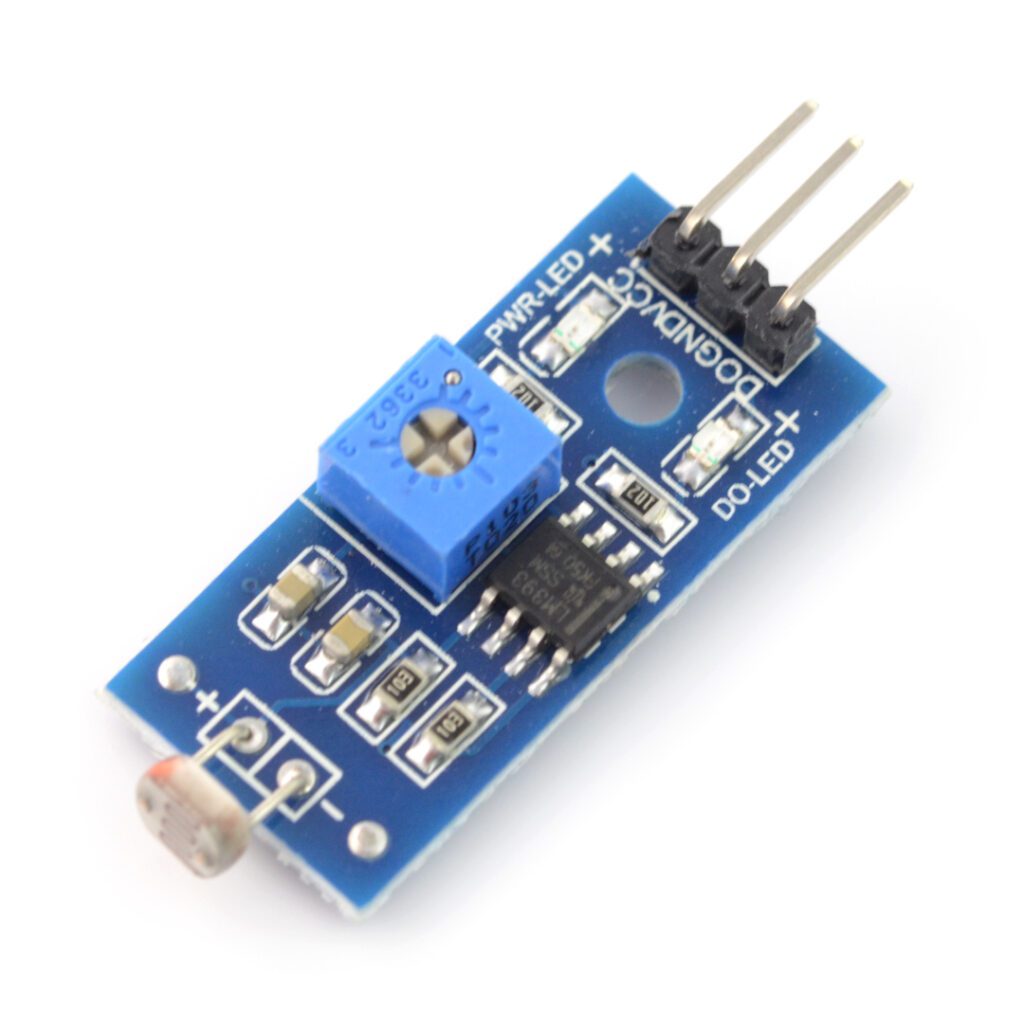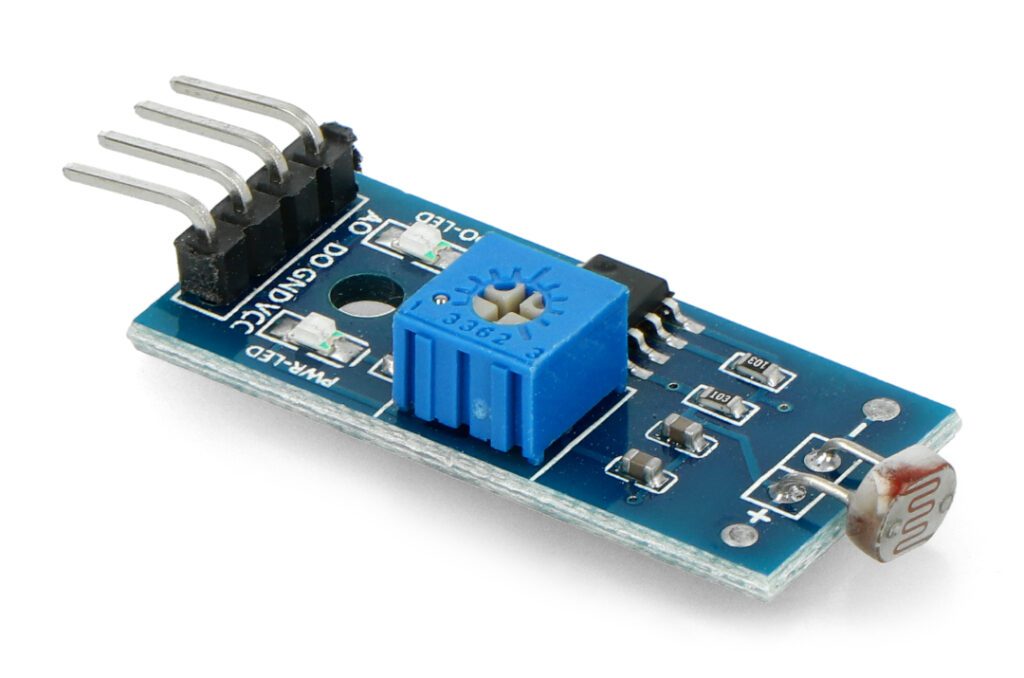Table of Contents:
The light sensor is one of the most common electronic components. Learn the most important information about this type of equipment with the Botland store.
What is a light sensor?
Most of us encounter different types of sensors
– the most commonly used undoubtedly include light sensors. They are used, among other things. in lighting, as well as in smartphones; moreover, components of this kind provide great opportunities in robotics and electronics projects. But what is the definition of this device? It is a sensor belonging to the family of photodetectors (or photosensors), the operation of which is based on a change in one of the electrical quantities (voltage, resistance or intensity) when a stream of light is detected.
This seemingly simple functionality is of considerable importance in many mechanisms and devices. Light sensors are used, among other things. For equipment that requires automatic switching on and off according to the light level. Photodetectors can also be used to adjust screen brightness or monitor weather conditions.
Light sensors - types
Depending on the design, there are three main types of light sensors – photodiodes, photoresistors and phototransistors. Each works in a slightly different way, which also translates into differences in application. Here is some basic information on the basic types of light sensors:
- Photoresistors are resistors with light-dependent resistance values. They can be used, for example, in street lamps or in some photographic equipment.
- Photodiodes convert light into electric current. They are used in equipment such as smoke detectors and televisions.
- Phototransistors, like photodiodes, convert light energy into electric current. However, they are more accurate because they can adjust the output value based on the amount of light received. Due to their more precise operation, they are used, among others. In security systems.
How does the light sensor work?
The exact way the light sensor works depends on its type and design. In the case of photoresistors, semiconductors play a key role, causing a change in resistance after the transition to the conducting state due to excitation by photons. If, in turn, light falls on a photodiode, the beam knocks out electrons, causing an electric current to flow – brighter light induces a stronger current. Its value can then be used to measure illuminance. The phototransistor works in a similar way, but in this case the resistance changes between the emitter and the base, on which the light radiation falls, allowing the value of the current on the collector to be controlled.
What is the light sensor made of?
The design of the light sensor, like its performance, depends on the specific type of component. Photoresistors are made of high-resistance semiconductor material that has high sensitivity to visible and near-infrared light. Importantly, these can be intrinsic semiconductors, such as silicon or germanium, or non-intrinsic (doped) semiconductors – the latter require slightly less energy.
Photodiodes are mainly formed from silicon; they also consist of optical filters, embedded lenses and surfaces. Phototransistors, on the other hand, can be described as photodiodes connected to an amplifying element.
What are light sensors used for?
The light sensor is a component with a very wide range of applications. Solutions of this type are used, among others. In automotive electronics, photography or automation. But that’s not all – on top of that, it’s worth noting the potential of sensors in robotics and various hobbyist projects.
Screen brightness adjustment
Sensors with different functions – including light sensors – are already basic equipment in both smartphones and laptops. In equipment of this type, they are primarily responsible for automatically adjusting the brightness of the screen depending on ambient lighting conditions. This can improve the readability of the displayed image or save energy.
In the case of smartphones, light sensors are usually placed at the top of the front panel of the device – a place that is usually not covered by the user’s hand, so the sensor can work in optimal conditions all the time. Some manufacturers mount the sensors in what is known as a “sensor”. Notch or under the display.
Automatic switching of lights on and off
Light sensors are used to automatically turn lanterns on or off in advanced street lighting systems. This is a useful feature in terms of energy savings – the use of sensors allows public spaces to be lit only when needed.
Automotive electronics
In the context of car electronics, we may also often encounter the term “twilight sensor” – but this is a component that operates on exactly the same principle. With its use, it is possible, among other things. Automatically turning the dipped headlights on or off depending on the lighting conditions on the road. As a result, you can count on a significant increase in driving safety – especially just after dark.
Automatic lighting control
In addition, light sensors allow the operation of various systems to adapt to changing lighting conditions. Examples include automatic light control systems in buildings, as well as security systems.
Photography
Another area where light sensors play an important role is photography. Such components can be found in both professional cameras and smartphones. With them, it is possible to automatically adjust the parameters of the photo, such as exposure time.
Light sensors in robotics
Finally, it is worth mentioning the area of light sensor application that interests us most. We’re talking about robotics and electronics – components of this type provide a wealth of opportunities for do-it-yourselfers and enthusiasts. In the assortment of the store Botland you can find light sensors with different parameters, adapted to work with the most popular platforms, such as Raspberry Pi or Arduino.
How useful was this post?
Click on a star to rate it!
Average rating 0 / 5. Vote count: 0
No votes so far! Be the first to rate this post.





















